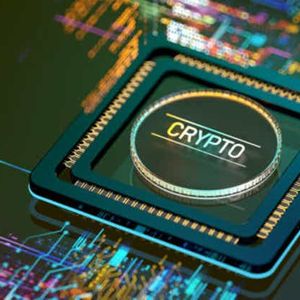What Is The Onchain Economy?
7 min read
Summary New digital infrastructure that is decentralized and programmable is replacing outdated legacy systems. The onchain economy represents the next phase of digital transformation built on blockchain and automation, quietly reshaping sectors far beyond crypto. Bitcoin adoption is accelerating among corporations, governments, and consumers, not just as an asset, but as a monetary alternative in an increasingly fragmented world. Trends like de-dollarization, the onshoring of energy and compute infrastructure, and the rethinking of global trade flows align with onchain investment themes. The onchain economy represents the next phase of digital transformation built on blockchain and automation, quietly reshaping sectors far beyond crypto. Understanding the Next Phase of Digital Transformation Global commerce is undergoing a significant overhaul. New digital infrastructure that is decentralized (no single entity controls it) and programmable (it can be customized and automated) is replacing outdated legacy systems. This transition is unfolding alongside broader macro shifts: rising interest in alternatives to the U.S. dollar, de-globalization, and a growing focus on domestic energy and infrastructure. The onchain economy is emerging as the connective tissue across these trends, where financial services, computing, and monetary systems are being reimagined from the ground up. This blog defines the onchain economy, breaks down the categories that make it up, and explores its positioning to benefit from a world increasingly influenced by Bitcoin and the digital asset ecosystem. From Online to Onchain The onchain economy describes economic activity enabled by blockchain-based infrastructure, where transactions, data, and assets are managed directly, transparently, and efficiently, reducing reliance on traditional middlemen and intermediaries. Over the past 25 years, most of the global economy has digitized, but not all of it has been truly transformed. Despite decades of innovation, much of today’s digital economy still relies on outdated systems: slow payment networks, siloed databases, and frustrating intermediaries — think the Department of Motor Vehicles (DMV)’s online portal. Systems like these often feel sluggish, clunky, and frustrating — a far cry from the seamless experience users expect today. The onchain economy is different. It’s a shift in how industries handle trust, value, and coordination — using code instead of paper, automation instead of middlemen, and transparency instead of opacity. It’s also emerging when confidence in legacy institutions is fading. Governments are exploring alternative reserve assets. Consumers are looking for digital-first stores of value. Corporations are integrating bitcoin into their balance sheets or treasury strategies. The onchain economy is the infrastructure layer enabling this evolution Mapping the Onchain Economy The onchain economy isn’t one industry; it’s a set of connected pieces working together. Here’s what it looks like in practice: Category What It Is What It Might Include Example Company Mining Companies that validate blockchain transactions using energy-intensive computing. Specialized mining operations, including hybrid AI/crypto compute. CleanSpark, Riot Platforms Exchanges Platforms that allow users to buy, sell, and store digital assets. Centralized trading platforms, token swap services, crypto-native brokers. Coinbase Holders Entities holding a material amount of digital assets as a strategic or treasury reserve. Public companies with significant Bitcoin on balance sheets. Strategy, Block Asset Managers Firms that create and manage crypto-focused portfolios for investors. Crypto ETP sponsors, actively managed crypto strategies, fund-of-fund offerings. CoinShares Data Centers Physical infrastructure operators supporting blockchain and AI workloads. High-performance computing centers, converted mining facilities. Equinix, Digital Realty Energy Infrastructure Providers of power and grid services for energy-intensive technologies. Utilities, nuclear, and renewable energy firms supporting blockchain Constellation Energy, NextEra Energy Traditional Finance (TradFi) Enablers Traditional finance companies adopting blockchain for greater speed, transparency, or cost-efficiency. Fintech apps, payment networks, digital ID PayPal, Robinhood Semiconductors/Hardware Hardware manufacturers building chips for mining, AI, and edge computing. Designers and fabricators of ASICs, GPUs, and HPC chips. Nvidia, AMD Consumer & Gaming Applications using tokens, NFTs, or smart contracts to deliver new digital experiences. Blockchain games, digital wallets, token-powered consumer apps. MercadoLibre, Shopify Crypto ETPs Exchange-traded products that provide exposure to digital assets through public markets. Spot Bitcoin products, Ether trackers, diversified crypto index notes. n/a Each category reflects a different angle on how increased Bitcoin and blockchain adoption drive real economic activity, whether it’s miners scaling energy usage, holders securing treasuries, or energy and data providers capturing digital infrastructure demand. Take MercadoLibre ( MELI ) , the Amazon of Latin America, which has integrated crypto payments to help millions gain exposure to digital assets through everyday transactions. This integration allows unbanked and underbanked people to transact securely and efficiently. Or consider CleanSpark ( CLSK ) , a Bitcoin mining company that contributes to grid stability by managing high-load computing infrastructure, a key component of how blockchain intersects with energy strategy. CleanSpark shows how blockchain-linked businesses can deliver real-world infrastructure benefits. These examples highlight how the onchain economy is already reshaping industries. Key parts of finance, energy, and computing are being rebuilt to meet the needs of a more decentralized global landscape. Why It Matters: Building a Better System Bitcoin adoption is accelerating among corporations, governments, and consumers, not just as an asset, but as a monetary alternative in an increasingly fragmented world. In 2024 alone, bitcoin ETPs saw $35 billion in inflows (CoinMarketCap), while stablecoins processed over $11 trillion in value, outpacing some major card networks. This is driving demand for infrastructure that supports this adoption: miners scaling energy capacity, data centers shifting workloads, and asset managers designing new ways to access the ecosystem. Meanwhile, trends like de-dollarization, the onshoring of energy and compute infrastructure, and the rethinking of global trade flows align with onchain investment themes. From power producers and semiconductor manufacturers to public companies holding bitcoin in treasury, the onchain economy is where monetary evolution meets real-world infrastructure. It’s not just a story of blockchain efficiency—it’s a broader economic shift that reflects how the next generation of financial and industrial systems is being shaped. The Economy Is Going Onchain The systems that power the economy are becoming more digital, more connected, and more automated. Blockchain and related technologies are starting to reshape how money moves, data is stored, and services are delivered. This defines the onchain economy—not just crypto but an entire stack of infrastructure, starting with everything from sovereign asset strategy to domestic energy production. This shift is still early, but it’s quietly laying the foundation for the next generation of financial and industrial systems. The economy isn’t just going digital— it’s going onchain . Disclosures Definitions Bitcoin ((BTC)): The first decentralized cryptocurrency, enabling peer-to-peer transactions without intermediaries, secured through a proof-of-work blockchain. Risk Considerations This is not an offer to buy or sell, or a recommendation to buy or sell any of the securities, financial instruments or digital assets mentioned herein. The information presented does not involve the rendering of personalized investment, financial, legal, tax advice, or any call to action. Certain statements contained herein may constitute projections, forecasts and other forward-looking statements, which do not reflect actual results, are for illustrative purposes only, are valid as of the date of this communication, and are subject to change without notice. Actual future performance of any assets or industries mentioned are unknown. Information provided by third party sources are believed to be reliable and have not been independently verified for accuracy or completeness and cannot be guaranteed. VanEck does not guarantee the accuracy of third party data. The information herein represents the opinion of the author(s), but not necessarily those of VanEck or its other employees. Index performance is not representative of fund performance. It is not possible to invest directly in an index. Investments in digital assets and Web3 companies are highly speculative and involve a high degree of risk. These risks include, but are not limited to: the technology is new and many of its uses may be untested; intense competition; slow adoption rates and the potential for product obsolescence; volatility and limited liquidity, including but not limited to, inability to liquidate a position; loss or destruction of key(s) to access accounts or the blockchain; reliance on digital wallets; reliance on unregulated markets and exchanges; reliance on the internet; cybersecurity risks; and the lack of regulation and the potential for new laws and regulation that may be difficult to predict. Moreover, the extent to which Web3 companies or digital assets utilize blockchain technology may vary, and it is possible that even widespread adoption of blockchain technology may not result in a material increase in the value of such companies or digital assets. Digital asset prices are highly volatile, and the value of digital assets, and Web3 companies, can rise or fall dramatically and quickly. If their value goes down, there’s no guarantee that it will rise again. As a result, there is a significant risk of loss of your entire principal investment. Digital assets are not generally backed or supported by any government or central bank and are not covered by FDIC or SIPC insurance. Accounts at digital asset custodians and exchanges are not protected by SPIC and are not FDIC insured. Furthermore, markets and exchanges for digital assets are not regulated with the same controls or customer protections available in traditional equity, option, futures, or foreign exchange investing. Digital assets include, but are not limited to, cryptocurrencies, tokens, NFTs, assets stored or created using blockchain technology, and other Web3 products. Web3 companies include but are not limited to, companies that involve the development, innovation, and/or utilization of blockchain, digital assets, or crypto technologies. All investing is subject to risk, including the possible loss of the money you invest. As with any investment strategy, there is no guarantee that investment objectives will be met and investors may lose money. Diversification does not ensure a profit or protect against a loss in a declining market. Past performance is no guarantee of future performance. © Van Eck Associates Corporation Original Post Editor’s Note: The summary bullets for this article were chosen by Seeking Alpha editors.

Source: Seeking Alpha



